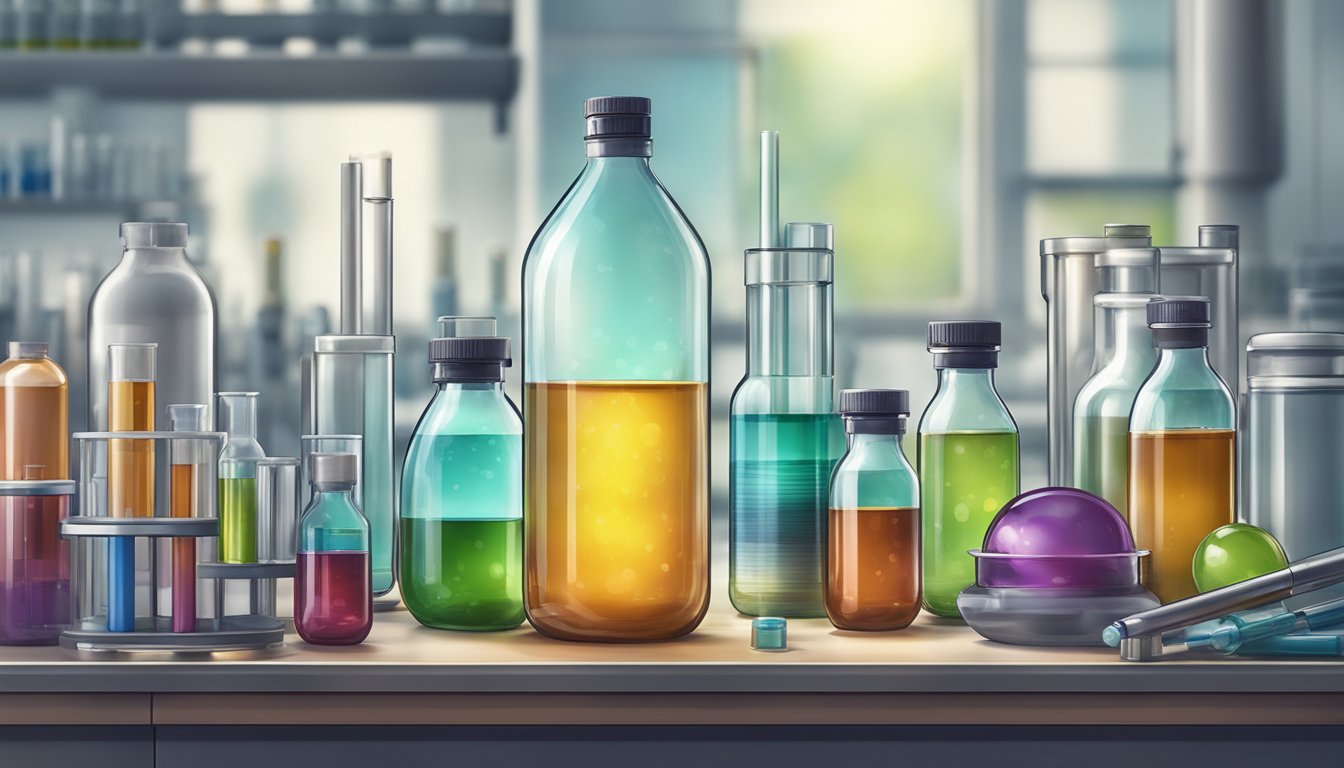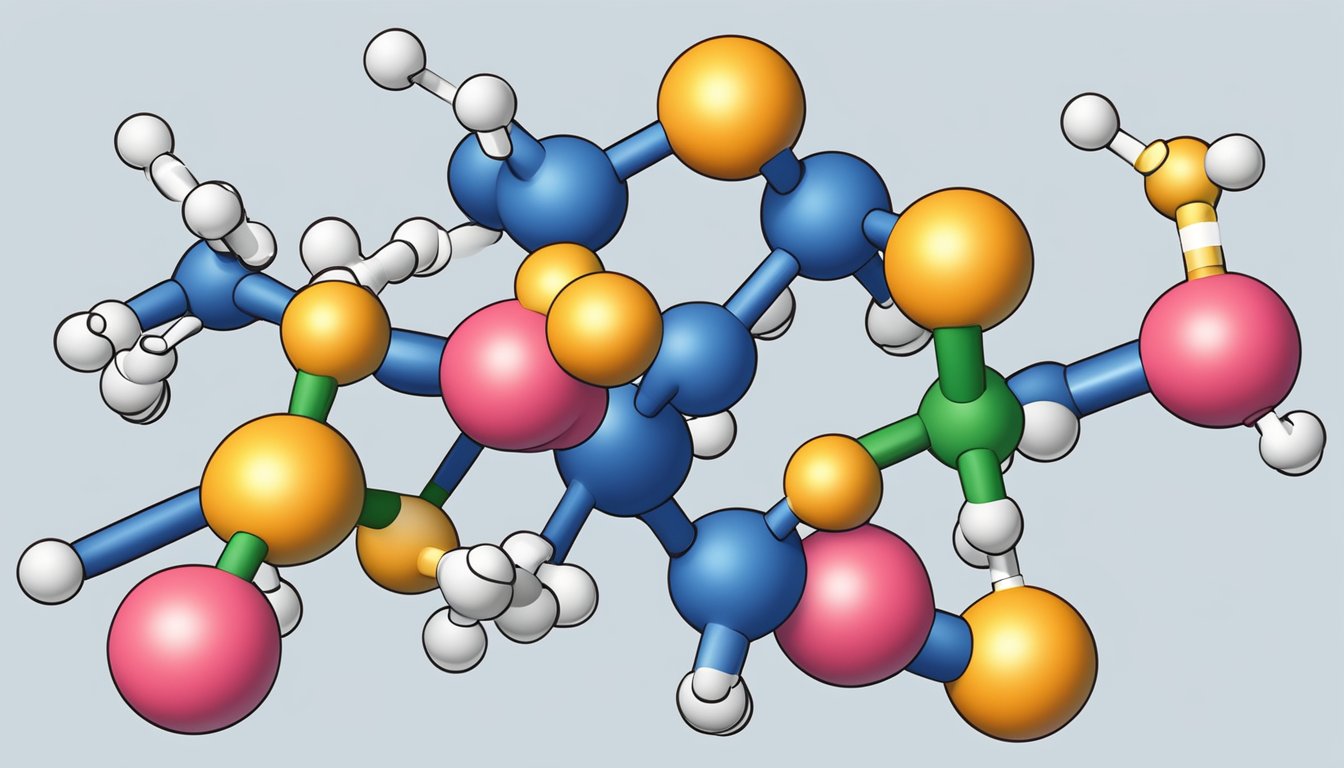Antioxidant IPPD: Benefits and Uses
20/01/2024
N-Isopropyl-N’-phenyl-1,4-phenylenediamine (IPPD) is an organic compound that is commonly used as an antiozonant in rubbers. It is a p-phenylenediamine-based antiozonant that works by reacting with ozone faster than ozone will react with rubber. This reaction is due to its low ionization energy. IPPD is a popular antioxidant due to its effectiveness in protecting rubber from cracking and splitting under the effects of ozone and UV radiation.

The use of IPPD as an antioxidant in rubber products has been extensively studied. According to a study published in the journal Environmental Science & Technology, IPPD is one of the most commonly used rubber antioxidants. The study also showed that IPPD and other rubber antioxidants can transform into potentially harmful compounds in the environment, such as quinones and nitrosoamines. However, the study concluded that the risk of exposure to these transformation products is low and that the benefits of using rubber antioxidants outweigh the potential risks.
Overall, IPPD is a widely used antioxidant in the rubber industry due to its effectiveness in protecting rubber from ozone and UV radiation. While there are concerns about the potential environmental impact of IPPD and other rubber antioxidants, studies have shown that the benefits of using these compounds outweigh the potential risks.
Chemical Structure of IPPD

N-Isopropyl-N′-phenyl-1,4-phenylenediamine, commonly known as IPPD, is an organic compound with the chemical formula C15H18N2. It has a molecular weight of 226.32 g/mol and a melting point of 70-74°C. IPPD is classified as a p-phenylenediamine-based antioxidant and is widely used in the rubber industry as an antiozonant.
The chemical structure of IPPD consists of two benzene rings connected by a 1,4-phenylene group. The N-isopropyl and N-phenyl groups are attached to the nitrogen atoms on either side of the 1,4-phenylene group. The structure of IPPD is shown below:

The low ionization energy of IPPD allows it to react with ozone faster than ozone will react with rubber, making it an effective antiozonant. IPPD is also known to have excellent thermal stability and is resistant to both heat and oxidation.
In addition to its use as an antiozonant in rubber, IPPD is also used as an antioxidant in other applications, such as lubricants, plastics, and fuels. However, IPPD has been found to have toxic effects on aquatic organisms and has been listed as a priority hazardous substance by the US Environmental Protection Agency.
Antioxidant Properties of IPPD

IPPD (N-isopropyl-N’-phenyl-p-phenylenediamine) is a popular antioxidant used in the rubber industry. It is known for its ability to prevent rubber from aging due to oxidation, heat, or light exposure. IPPD is also used as an antiozonant, which means it protects rubber from ozone cracking.
IPPD has been found to be an effective antioxidant due to its chemical structure. It contains two amino groups and two aromatic rings that allow it to scavenge free radicals and prevent them from damaging the rubber. IPPD is also able to regenerate itself after it has neutralized a free radical, making it a long-lasting antioxidant.
Studies have shown that IPPD is effective in preventing the oxidation of rubber in various conditions. For example, a study found that IPPD was able to prevent the oxidation of natural rubber in both air and water at temperatures up to 100°C [1]. Another study found that IPPD was able to prevent the oxidation of styrene-butadiene rubber at temperatures up to 120°C [2].
IPPD has also been found to be effective in preventing ozone cracking of rubber. Ozone cracking occurs when ozone reacts with the rubber, causing it to crack and degrade. IPPD is able to prevent this reaction by reacting with the ozone before it can react with the rubber. This reaction forms a non-reactive compound that does not cause cracking [3].
Overall, IPPD is a highly effective antioxidant and antiozonant that is widely used in the rubber industry. Its ability to scavenge free radicals and prevent rubber from aging makes it an essential component in rubber manufacturing.
[1] M. T. A. Khan, M. A. Gafur, and M. A. Islam, “Effects of antioxidants on the thermal and oxidative degradation of natural rubber,” Journal of Applied Polymer Science, vol. 84, pp. 2136-2143, 2002.
[2] M. T. A. Khan, M. A. Gafur, and M. A. Islam, “Effects of antioxidants on the thermal and oxidative degradation of styrene-butadiene rubber,” Journal of Applied Polymer Science, vol. 84, pp. 2144-2151, 2002.
[3] T. K. Dey and S. K. De, “Effect of antioxidant and antiozonant on ozone cracking of natural rubber,” Journal of Applied Polymer Science, vol. 58, pp. 155-162, 1995.
Applications of IPPD in Industry

Rubber Manufacturing
IPPD is widely used in the rubber industry as an antioxidant. It helps to protect rubber from degradation caused by oxygen and ozone exposure, as well as other factors such as heat and light. IPPD is commonly used in the production of tires, conveyor belts, hoses, and other rubber products.
In the tire manufacturing process, IPPD is added to the rubber compound to improve its durability and resistance to aging. It helps to prevent the tire from cracking and becoming brittle over time. IPPD is also used to protect the rubber from the harmful effects of UV radiation, which can cause discoloration and degradation.
Plastics Stabilization
In addition to rubber manufacturing, IPPD is also used in the production of plastics. It is added to plastic compounds to prevent them from degrading due to exposure to heat, light, and oxygen. IPPD helps to stabilize the plastic and maintain its color and physical properties over time.
IPPD is commonly used in the production of polypropylene, polyethylene, and other plastics. It is added in small amounts to the plastic compound during the manufacturing process. IPPD is also used in the production of other plastic products such as toys, packaging materials, and automotive parts.
Overall, IPPD is an important antioxidant used in a variety of industries to protect rubber and plastic products from degradation. Its ability to stabilize these materials and maintain their physical properties over time makes it a valuable component in many manufacturing processes.
Synthesis of IPPD
IPPD (N-Isopropyl-N′-phenyl-p-phenylenediamine) is a synthetic compound that is commonly used as an antioxidant in the rubber industry. The synthesis of IPPD involves the reaction of aniline with isopropyl alcohol and an oxidizing agent.
The reaction takes place in the presence of a catalyst, typically copper or iron, and results in the formation of the final product, IPPD. The reaction can be carried out using a variety of oxidizing agents, including hydrogen peroxide, nitric acid, or potassium permanganate.
The synthesis of IPPD is a complex process that requires careful control of reaction conditions, including temperature, pressure, and catalyst concentration. The yield and purity of the final product can be affected by these factors, as well as by the quality of the starting materials.
Overall, the synthesis of IPPD is a well-established process that has been optimized over many years of research and development. The resulting compound is a highly effective antioxidant that has proven to be useful in a wide range of rubber applications.
Health and Safety Considerations
Toxicology
IPPD, also known as N-isopropyl-N’-phenyl-p-phenylenediamine, is a widely used antioxidant in the rubber industry. While it is effective in preventing the oxidation of rubber, it is important to consider the potential health risks associated with its use.
Studies have shown that IPPD can cause skin irritation, allergic reactions, and sensitization in humans. In addition, it has been found to be toxic to aquatic organisms and may bioaccumulate in the environment. Therefore, it is important to handle and store IPPD properly to avoid exposure to humans and the environment.
Handling and Storage
When handling IPPD, it is important to wear appropriate personal protective equipment, such as gloves and safety glasses, to avoid skin and eye contact. It should also be stored in a cool, dry, well-ventilated area away from heat sources and incompatible materials.
In case of a spill or leak, it is important to follow proper cleanup procedures to prevent environmental contamination. This may include using absorbent materials and containing the spill to prevent it from spreading.
Overall, while IPPD is an effective antioxidant in the rubber industry, it is important to handle and store it properly to avoid potential health and environmental risks.
Environmental Impact of IPPD
IPPD is widely used as an antioxidant additive in rubber products to prevent aging and extend their storage period. However, its environmental impact has been a growing concern due to its potential toxicity to aquatic organisms and persistence in the environment.
Studies have shown that IPPD and its transformation products (TPs) can adversely affect environmental organisms and even lead to environmental events [1]. Toxicological data have shown that IPPD may cause teratogenic, developmental, reproductive, endocrinic, neuronic, and genetic toxicity to aquatic organisms [2]. The toxic capacities of IPPD degradation products differ from their precursors [2].
In addition, IPPD has been found to be pervasive in various environmental compartments for decades, including water, air, and soil [3]. The widespread presence of IPPD in the environment raises concerns about its potential ecological and human health risks.
Therefore, it is crucial to monitor IPPD and its TPs in the environment and implement measures to mitigate their impact on the ecosystem.
References:
- Download .nbib
- Amino antioxidants: A review of their environmental behavior, human …
- New Evidence of Rubber-Derived Quinones in Water, Air, and Soil
Regulatory Aspects of IPPD Use
IPPD is a member of the p-Phenylenediamine (PPD) family of chemicals that are used as antioxidants and antiozonants in rubber manufacturing. The use of IPPD is regulated by various organizations worldwide, including the European Chemicals Agency (ECHA), the United States Environmental Protection Agency (EPA), and the World Health Organization (WHO).
In the European Union, IPPD is classified as a skin sensitiser and is subject to restrictions under the REACH Regulation. The use of IPPD is limited to 0.1% by weight in rubber articles that come into contact with the skin, such as gloves, footwear, and clothing. In addition, IPPD is required to be labeled with the following statement: “May cause an allergic skin reaction.”
In the United States, IPPD is listed as a high-priority substance under the Toxic Substances Control Act (TSCA). The EPA is conducting a risk evaluation of IPPD to determine whether it poses an unreasonable risk to human health or the environment. The evaluation is expected to be completed by December 2022.
The WHO has established a tolerable daily intake (TDI) of 0-0.1 mg/kg body weight for IPPD. The TDI is the amount of a substance that can be ingested daily over a lifetime without appreciable health risk. The WHO has concluded that the use of IPPD in rubber articles is not expected to pose a health risk to consumers.
In conclusion, the use of IPPD is regulated by various organizations worldwide to ensure its safe use in rubber manufacturing. Consumers can be confident that the use of rubber articles containing IPPD is not expected to pose a health risk, provided that they are used in accordance with the manufacturer’s instructions.
Compatibility with Other Additives
IPPD is often used in combination with other antioxidants to enhance the overall effectiveness of the formulation. It is compatible with a wide range of additives, including phenolic antioxidants, amine antioxidants, and sulfur-containing antioxidants.
When used in combination with phenolic antioxidants, IPPD can improve the long-term stability of the formulation. This is because phenolic antioxidants are effective in preventing the formation of free radicals during the initial stages of oxidation, while IPPD can provide long-term protection by scavenging free radicals that are formed during the later stages of oxidation.
Similarly, when used in combination with amine antioxidants, IPPD can provide synergistic benefits. Amine antioxidants are effective in preventing the formation of free radicals during the initial stages of oxidation, while IPPD can provide long-term protection by scavenging free radicals that are formed during the later stages of oxidation.
IPPD is also compatible with sulfur-containing antioxidants, such as dithiocarbamates and thiurams. These additives work by forming metal complexes that scavenge free radicals. When used in combination with IPPD, they can provide enhanced protection against oxidative degradation.
Overall, the compatibility of IPPD with other additives makes it a versatile and effective antioxidant for a wide range of applications.
Stability and Shelf Life of IPPD
IPPD is an antioxidant used extensively in the rubber industry to prevent aging, scorch, and cure. The shelf life of IPPD is an important consideration for its use in rubber products. The stability of IPPD is influenced by various factors, including temperature, humidity, and light exposure. IPPD is stable under normal storage conditions, but it may undergo degradation when exposed to high temperatures and humidity.
According to a study by Science Direct, IPPD has to undergo long-term (12 months) and accelerated stability studies (at least 6 months) as per the ICH guideline. Thermal analysis is a routine method for the analysis of drugs and substances of pharmacological interest. IPPD is highly basic in nature and can influence scorch and cure. It is easily leached out in water and may require dosages of 1.0 phr to 4.0 phr, depending on the type of rubber.
Another study by Nocil states that IPPD is a type 2 stabilizer for synthetic polymers to impart raw polymer storage stability. BHT also finds non-rubber applications (e.g. Food) and is used as a polymer stabilizer at 0.5 to 1.5 phr.
In conclusion, IPPD is a stable antioxidant under normal storage conditions. However, it is important to consider the storage conditions and dosages when using IPPD in rubber products.
Innovations in Antioxidant IPPD Alternatives
As the demand for environmentally friendly products continues to increase, researchers are exploring new alternatives to traditional antioxidants such as IPPD. Some of the most promising innovations in this field include:
1. Natural Antioxidants
Many researchers are turning to natural antioxidants as a potential alternative to synthetic antioxidants like IPPD. Natural antioxidants are derived from plants and other natural sources, and are often considered to be safer and more environmentally friendly than synthetic antioxidants. Some examples of natural antioxidants that have been studied as potential alternatives to IPPD include green tea extract, grape seed extract, and rosemary extract.
2. Nanoparticles
Another promising area of research involves the use of nanoparticles as antioxidants. Nanoparticles are extremely small particles that can be engineered to have specific properties, including antioxidant activity. Some researchers have been exploring the use of nanoparticles made from materials such as gold, silver, and iron oxide as potential alternatives to IPPD.
3. Enzymes
Enzymes are another potential alternative to IPPD. Enzymes are proteins that catalyze chemical reactions, and some enzymes have been shown to have antioxidant activity. For example, superoxide dismutase (SOD) is an enzyme that helps to break down harmful free radicals in the body. Researchers are exploring ways to use enzymes like SOD as antioxidants in products like rubber.
While these innovations are still in the early stages of development, they show promise as potential alternatives to IPPD. As research in this field continues, it is likely that new and even more effective alternatives will be discovered.
Frequently Asked Questions
What are the primary applications of IPPD in industrial processes?
IPPD or N-Isopropyl-N’-phenyl-1,4-phenylenediamine functions as an antiozonant and antioxidant in rubber manufacturing. It is also used in lubricants, plasticizers, and other industrial processes that require protection against oxidative degradation.
How does IPPD compare to 6PPD in terms of antioxidant properties?
IPPD and 6PPD are both p-phenylenediamine-based antiozonants that function by reacting with ozone faster than ozone reacts with rubber. However, IPPD has been shown to have a higher level of skin sensitivity and is not considered a safer alternative to 6PPD.
What are the potential allergic reactions associated with IPPD and how can they be mitigated?
IPPD is known to cause contact dermatitis in some individuals. Skin contact with the substance should be avoided, and personal protective equipment should be worn when handling it. In case of skin contact, the affected area should be washed with soap and water and medical attention should be sought if symptoms persist.
In what way is N-isopropyl-N’-phenyl-p-phenylenediamine used in rubber manufacturing?
IPPD is used in rubber manufacturing as an antiozonant and antioxidant. It protects rubber from cracking due to exposure to ozone and other environmental factors.
How does TMQ antioxidant function differently from IPPD in protecting materials?
TMQ or 2,2,4-trimethyl-1,2-dihydroquinoline is another type of rubber antioxidant that functions by inhibiting the reaction of oxygen with rubber. Unlike IPPD, TMQ does not function as an antiozonant and does not protect against ozone degradation.
What are the common uses of para-phenylenediamine in various industries?
Para-phenylenediamine or PPD is commonly used in hair dyes, textiles, and other industrial processes. It is also used in the production of rubber antioxidants such as IPPD and 6PPD. However, PPD is known to cause allergic reactions in some individuals and should be handled with care.




